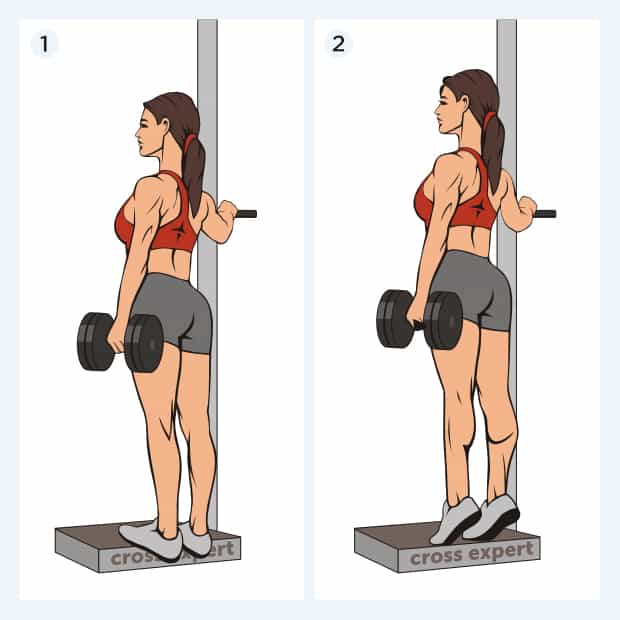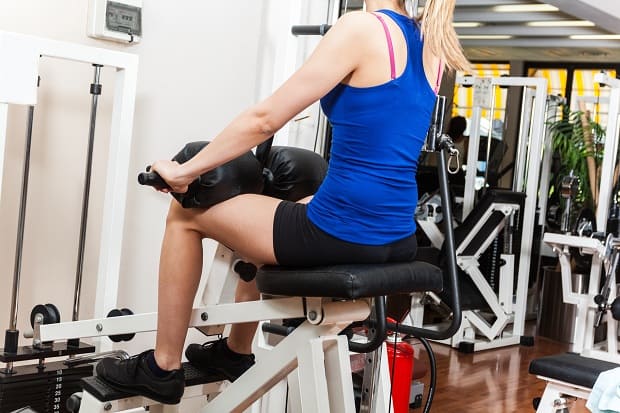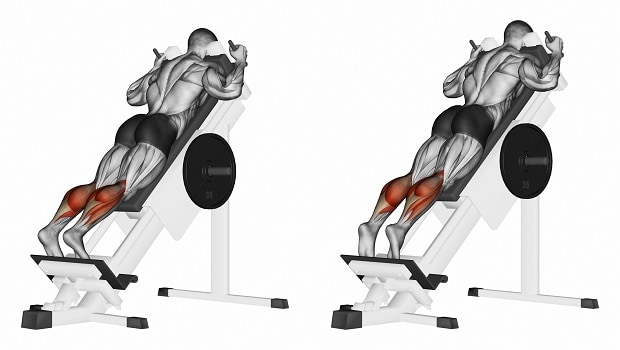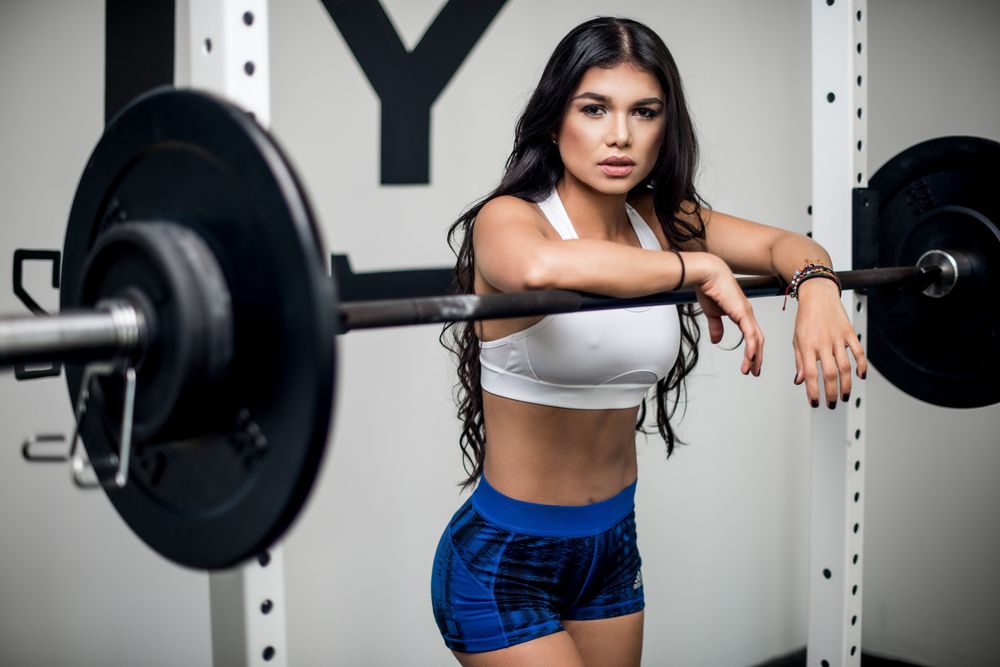Athletes involved in power sports have both strong and weak muscle groups, which is determined by individual parameters and genetics. But there are patterns that apply to almost all athletes. Namely, underdeveloped legs. To level this disadvantage, it is especially important to pump an ankle.
In this article, we will look at calf exercises and find out how they work. You will receive answers to questions about why calves need special attention and whether only running is enough to build them.
General information and anatomy
The calf muscles are often forgotten in the early training stages, trying to work out the chest, arms and back. As a result, for the calf are postponed or are rarely performed, which leads to a lack of progress.
This situation is associated with the features of the anatomy of this muscle group:
- The calf includes a huge amount of small muscles.
- The calves are predisposed to prolonged stress (they work constantly when walking).
The drumstick itself consists of two large groups:
- Calf. Responsible for leg extension in the ankle joint in the standing position of the body. It is she who takes the lion’s share of the load on herself and determines the position of the foot on the ground.
- Flounder. Usually this muscle group is much weaker, as it is responsible for the rotation of the ankle joint in a sitting position, when the weight of the whole body does not press on the shin.
Therefore, in order to develop large calves, it is necessary to pay attention not only to the calf, but also to the soleus muscles.
Training Recommendations
When working on this muscle group, it is important to remember the following features:
- Gastrocnemius and soleus – this is a bunch that needs to be trained in the same way as the biceps and brachialis.
- Calf is a small muscle group that responds well to loads with high weight and high intensity, but, as a rule, responds poorly to prolonged monotonous aerobic loads. The optimal scheme is to do exercises in full amplitude for 12-20 repetitions.
- The calf muscles are involved in almost all exercises, which creates an additional need for their pumping in the early stages, while they are still susceptible to stress loads.
- You can exercise this muscle group 2-3 times a week. There are two main approaches: 1-2 exercises at the end of each training session or the calf set in between the sets on other muscle groups. Both options are good, you need to try both and see which result is better for you specifically.
Read also: HIIT workout
Exercises: One of the main problems of calf pumping exercises is their insulating nature.
Consider the main ones:
| Exercise | Load type | Working muscle group |
| Calf raise | Isolation | Calf |
| Seated calf raise in the machine | Isolation | Flatfish |
| 45 degree calf raise in the machine | Isolation | Soleus + calf |
| Run | Cardio | Calf |
| Stepper | Cardio | Calf |
| Exercise bike | Cardio | Calf + flatfish |
Despite the fact that a heavy squat does not affect calf pumping, it significantly enhances the static strength of the calf, which creates a solid foundation for building a harmonious body and developing functional strength.
Calf raise
This exercise is designed for athletes of any level of fitness and is considered the main one for working out the calf muscles. Calf raise has many variations, including:
- Calf raises with weights.
- Calf raises on one leg.
Execution technique of the exercise:
- Stand on a wooden beam. If there is no wooden beam available, the edge of the step, sills or any other protruding surface will do. There are also special simulators. You can perform the movement in Smith, substituting a step platform under your feet, and put the barbell on your shoulders.
- Lock the body in a straight position (stable posture).
- If additional weight is required – take dumbbells or any other weights into hands. The simulator is loaded with weight plates.
- Next, you need to slowly lower your heels below the level of the bar, trying to stretch the ankle ligaments as much as possible.
- With a powerful impulse movement, rise on the toes.
- Fix in this position for 1-2 seconds and strain the calves.
- Slowly lower to the starting position.

Note: There are certain disputes regarding the full extension of the knee joint. On the one hand – this greatly facilitates the exercise, on the other hand – increases the load on the knee. If you use light weights for training, you can straighten your legs completely. However, if you work with large weights (for example, in a Hackenschmidt machine), then it is better to level the fact of articular load
Sitting on socks
Despite a similar technique, the rise to the socks while sitting in the machine does not involve the calf, but the soleus muscle lying under it.
The technique of the exercise is extremely simple:
- Set a suitable weight on the treadmill (usually up to 60% of the working weight for a classic lift on toes).
- Sit in the machine.
- Slowly lower your heels below the level of the latch on the simulator, trying to stretch the ankle ligaments as much as possible.
- Powerfully pulsate to rise on toes.
- Lock in position for 1-2 seconds.
- Slowly lower to the starting position.

Note: if you do not have a machine, put dumbbells, weights, pancakes from the bar on your knees as an additional burden. Using third-party items will significantly reduce the effectiveness of the exercise, but will allow you to perform it at home.
45 degree calf raise
Among all exercises aimed at the development of calf muscles, this can be called conditionally complex and the most difficult. It’s all about changing the angle of the legs, which allows you to use not only the calf, but also the sole.
You may also like: Human Chorionic Gonadotropin – A Hormone of Health for All people
The technique of the exercise is practically no different from the previous ones:
- Sit in a Hackenschmidt maschine.
- Set a suitable working weight. It is calculated as the arithmetic mean between the working weights in the previous two exercises. Next, weights should be selected according to the loads.
- Then you need to lower the heels, trying to stretch the calf as much as possible.
- Rise on toes.
- Lock in the extreme voltage position for 1-2 seconds.

Myths about calf training
Many gym-goers (especially beginners) believe that they do not need to pump their calf muscles separately, because calves work in:
- Squat with weights.
- Deadlift.
- Cardio exercises.
This is true, however, in the case of these exercises, the calf performs a stabilizing static load, which increases their strength, but not the volume. Only genetically gifted people can pump their calves without doing the exercises directly on them. Everyone else will have to try hard.
Summary
To pump up your calves, remember the following rules:
- Give the calf muscles enough attention from the first workout.
- Do not chase excessively large weights.
- Alternate different types of loads.
And remember the classic pyramid of progression: nutrition / relaxation / competent training. Be sure to use your training diary to create the conditions for continuous progress.

